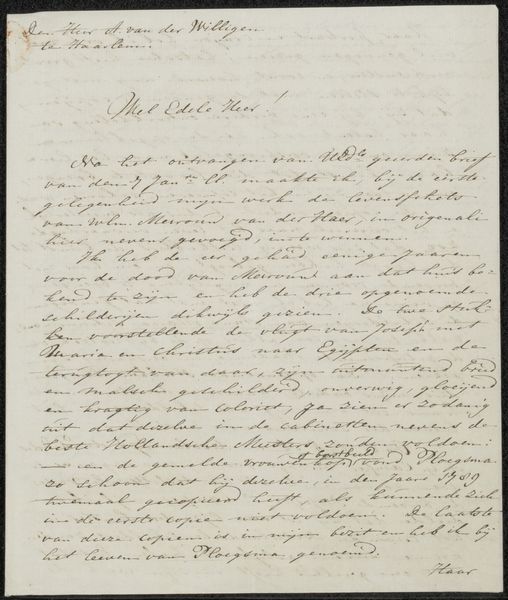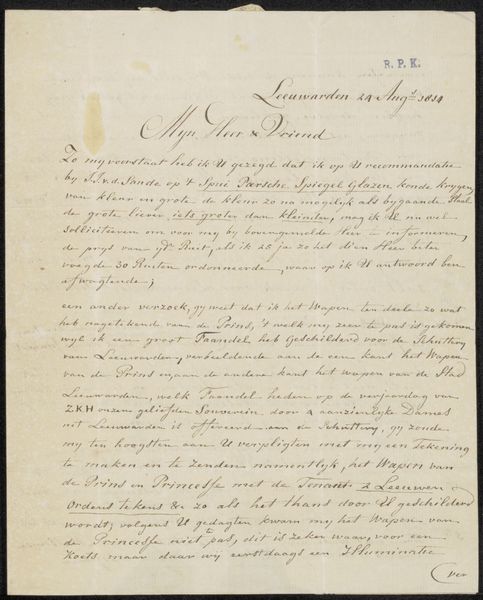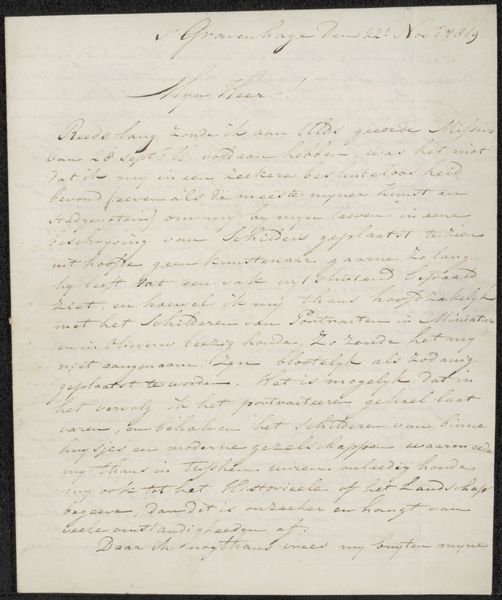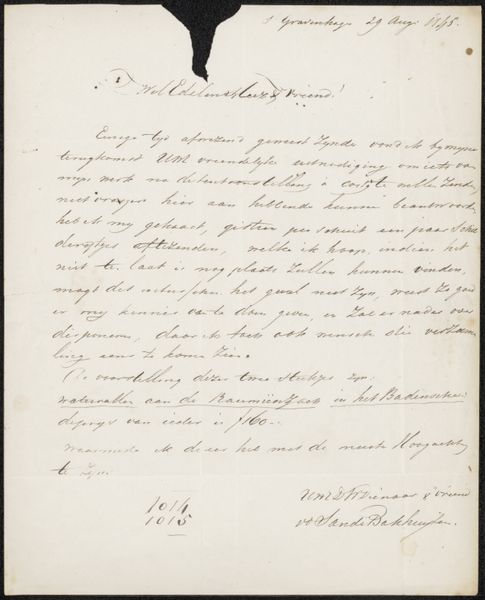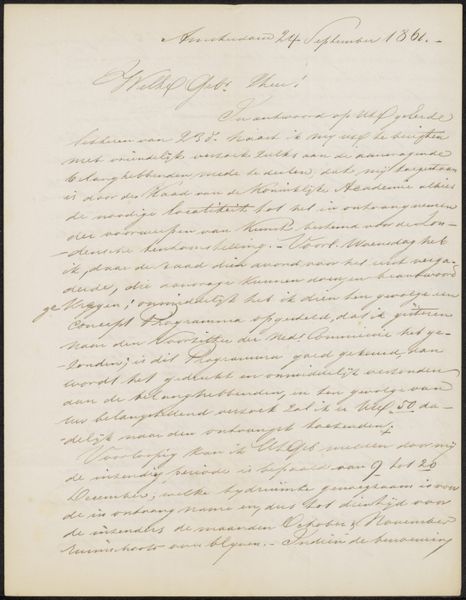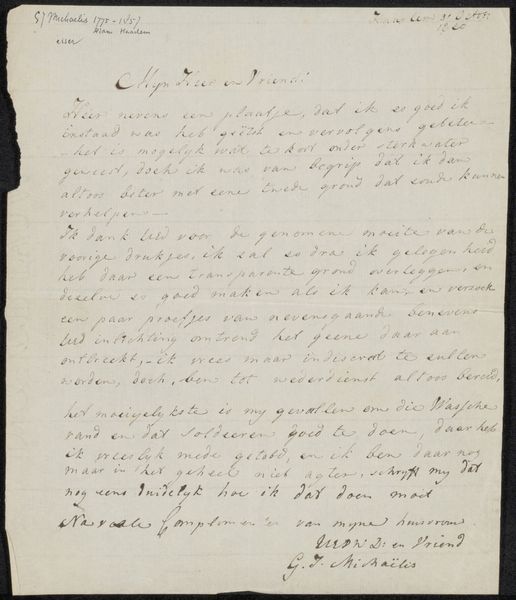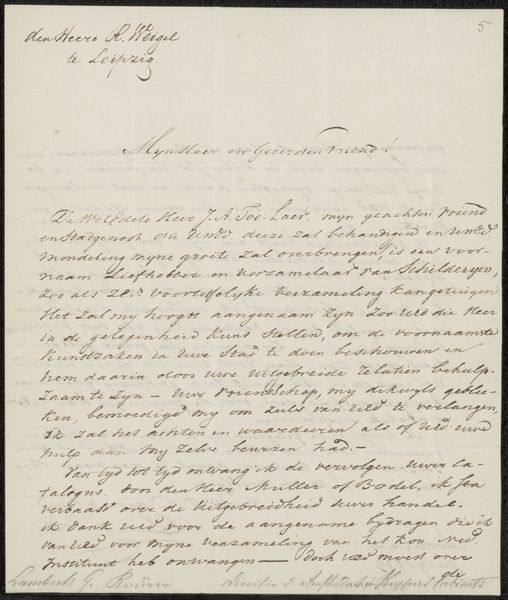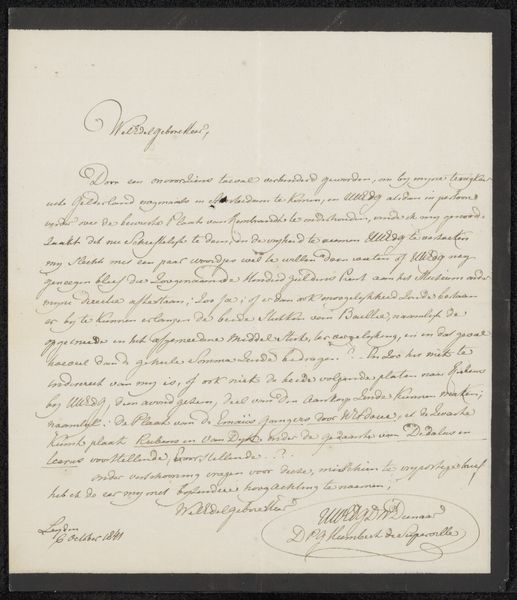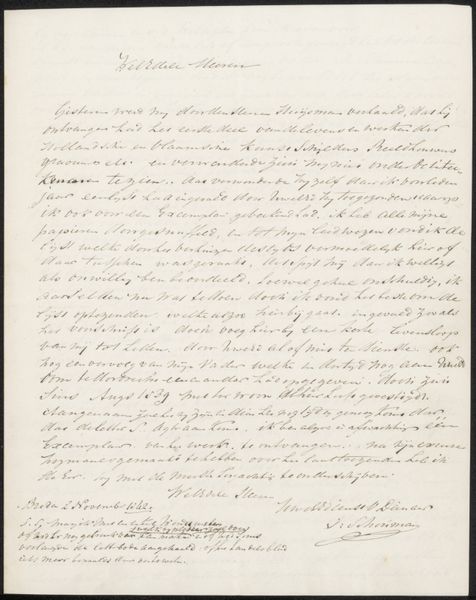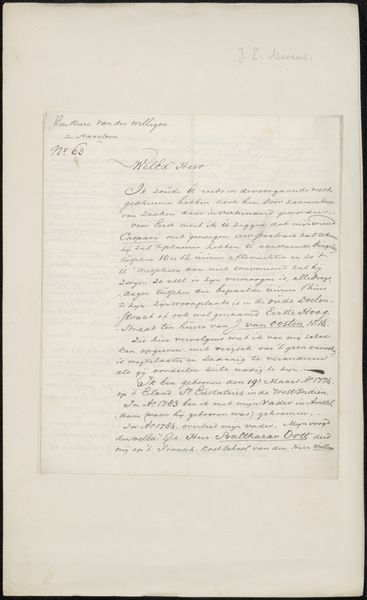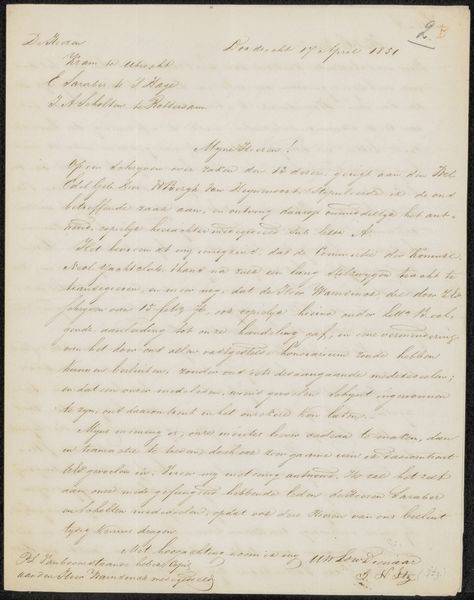
drawing, paper, ink, pen
#
portrait
#
drawing
#
paper
#
ink
#
pen
Copyright: Rijks Museum: Open Domain
Curator: We’re now viewing a document from the early 19th century titled "Brief aan Charles Howard Hodges," thought to possibly date to 1804. It's an ink pen drawing on paper, penned by C.G. Silberberg. What are your initial thoughts? Editor: I am immediately struck by its delicate script. It has a subdued tone, the gray ink seeming to whisper secrets from another era. The texture of the paper, slightly visible through the ink, lends it an air of vulnerability and quietude. Curator: Silberberg’s letter offers us insight into artistic exchange and perhaps some professional anxieties of the time. Correspondence, especially among artists and patrons, often served as crucial social and economic engines. Letters act almost like portraits, carrying social identity within the choice of script, stationary, and language. The letter’s recipient, Hodges, would be a familiar name to art historians. Editor: That's a key point. Silberberg is obviously attentive to presentation—see how he addresses the reader with "Monsieur," employing elevated language and careful penmanship. You also glean what the artist-to-patron dynamic involved and who had the "upper hand" in deciding what qualified for professional work. But it goes beyond that as well, as you mention, offering us as modern readers intimate access to a cultural identity constructed over time. Curator: It also raises questions. We read Silberberg discussing "dessins" – drawings – sent by Hodges and whether or not the latter's subject was appropriate, hinting at perhaps a commissioned piece or style preference that didn’t quite match the expectations of "les amateurs," a specific circle of art enthusiasts. It invites us to consider the delicate dance between artistic integrity and patronage demands. The emotional timbre I’m sensing from the script is anxious, which also makes sense within this context. Editor: Absolutely. You read anxiety in it and, I do as well, both in the content of his words but also formal clues in the page, such as the corrections and the tight spacing, implying urgency, the constraints of a deadline, and, of course, Silberberg's own hand! It seems this unassuming drawing has far more to communicate than just ink on paper. Curator: A glimpse into the economic and social world behind a "finished" artwork.
Comments
No comments
Be the first to comment and join the conversation on the ultimate creative platform.
